Where US military aid is being spent, ranked
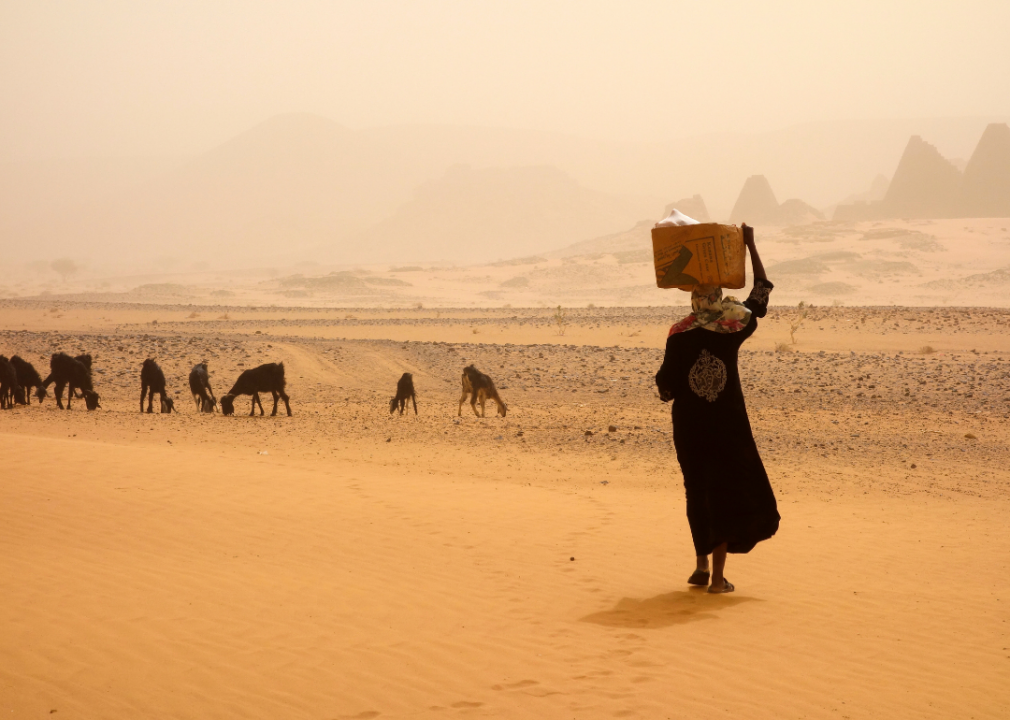
yiannisscheidt // Shutterstock
Where US military aid is being spent, ranked
The United States spent $47.2 billion in foreign aid in 2019, down from $52.5 billion in 2016. Around 30% of U.S. foreign aid is classified as military, with other funds going to economic development, education, and humanitarian assistance. Foreign aid in total generally represents less than 1% of the U.S. federal budget.
President Biden’s foreign aid budget request for the fiscal year 2022 jumped by $19 billion over Trump’s final budget proposal for the year prior, with a top line request of $63.5 billion. The budget includes increased funding for education, climate initiatives, and health around the world, while also offering additional aid to address the root causes of forced migration in Central and South America. Resources are allocated for the continued fight against COVID-19, the revival of the Refugee Admissions Program, and the budget infuses $10 billion into humanitarian help around the world, including aid to Palestinians. The budget further allocates $715 billion for defense spending—but where does such military spending go?
To determine where the United States has spent the most military aid on average over the last decade, Stacker analyzed spending data from 2011 to 2020 using ForeignAssistance.gov. Categories were averaged across all available years to compute a ranking for total yearly spending. Indicator data is provided to the U.S. government by the World Bank.
Keep reading to discover which countries around the world receive the most military aid from the U.S., and how those numbers break down.
You may also like: Most and least popular governors in America
![]()
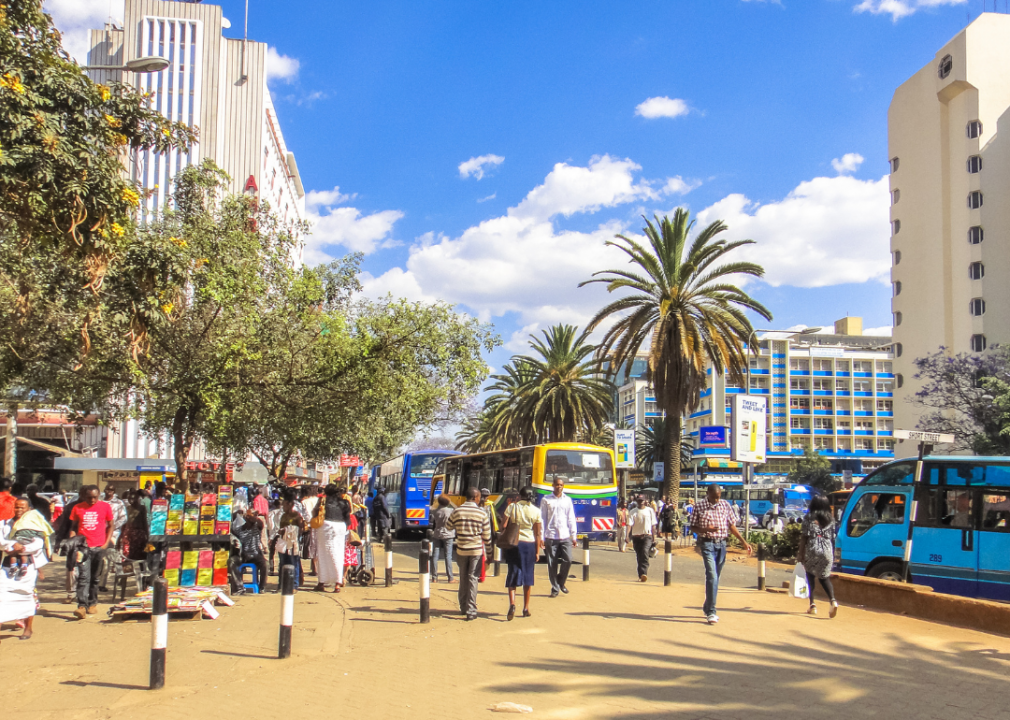
Authentic travel // Shutterstock
#25. Kenya
– Yearly spending: $18.5 million
— #1. Combating Weapons of Mass Destruction ($5.4 million; 29.4%)
— #2. Counter-Terrorism ($5.1 million; 27.4%)
— #3. Conflict Mitigation and Reconciliation ($3,939,629; 21.3%)
– Indicators:
— Political stability (percentile): 12.38%
— Government effectiveness (-2.5 to 2.5): -0.38
— Control of corruption (-2.5 to 2.5): -0.78
The United States established diplomatic relations with Kenya in 1964, after the country declared independence from the United Kingdom. That relationship has grown exponentially over the years, with the U.S. providing substantial military aid directed toward combating terrorism, strengthening border security, and improving the country’s overall peacekeeping abilities.
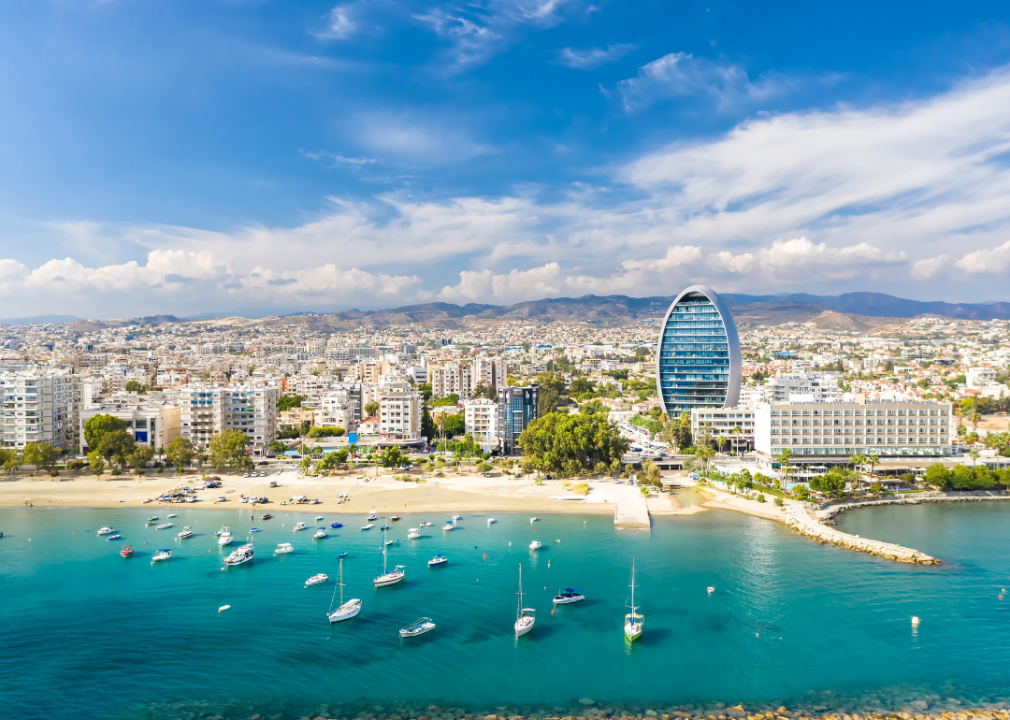
kirill_makarov // Shutterstock
#24. Cyprus
– Yearly spending: $18.7 million
— #1. Peace and Security ($16.0 million; 85.6%)
— #2. Conflict Mitigation and Reconciliation ($2.7 million; 14.4%)
– Indicators:
— Political stability (percentile): 63.33%
— Government effectiveness (-2.5 to 2.5): 0.99
— Control of corruption (-2.5 to 2.5): 0.6
Diplomatic relations between the U.S. and Cyprus were established in 1960. When Turkey invaded Cyprus in the 1970s, the U.S. began providing military aid to Cypriot residents displaced by the invasion. The American government continues to support Cyprus, signing an intent of bilateral security cooperation in 2018 and promoting peace and security as well as economic development and counterterrorism efforts.
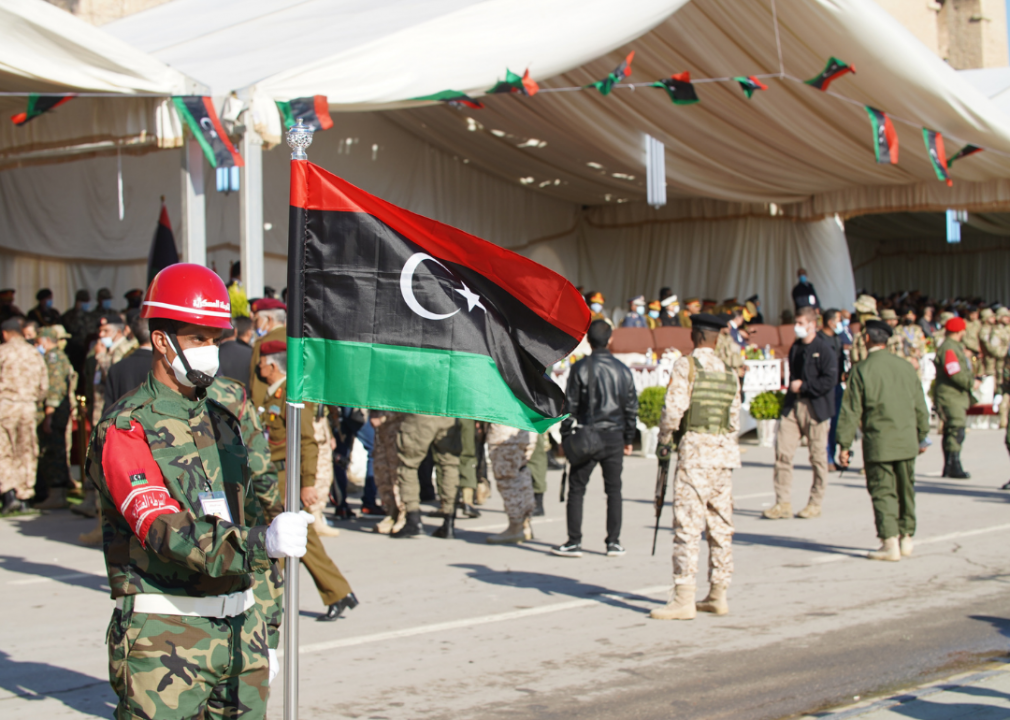
Hussein Eddeb // Shutterstock
#23. Libya
– Yearly spending: $19.8 million
— #1. Conflict Mitigation and Reconciliation ($13.3 million; 67.1%)
— #2. Peace and Security ($4.4 million; 22.2%)
— #3. Stabilization Operations and Security Sector Reform ($823,438; 4.2%)
– Indicators:
— Political stability (percentile): 1.43%
— Government effectiveness (-2.5 to 2.5): -1.92
— Control of corruption (-2.5 to 2.5): -1.6
After the 2011 uprising that displaced ruler Muammar Gaddafi, Libya’s interim leadership was unable to stabilize the country, and the U.S. stepped in to help. Military aid to Libya focuses on security and humanitarian issues as well as helping in managing and promoting fair elections, efforts which are all coordinated with the United Nations Support Mission in Libya.
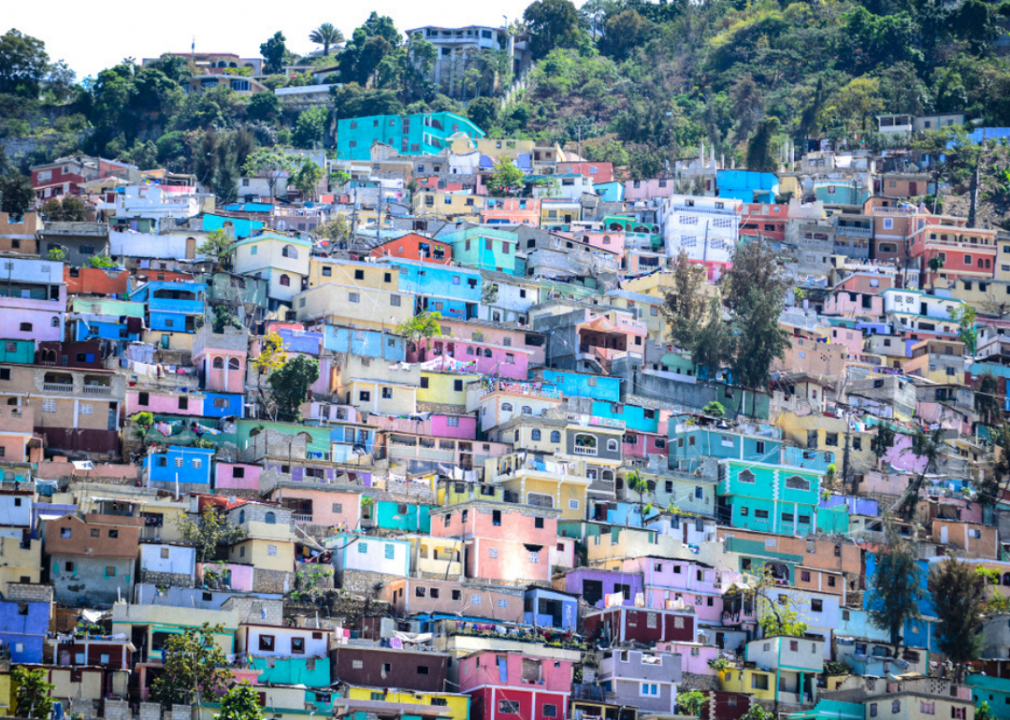
Sylvie Corriveau // Shutterstock
#22. Haiti
– Yearly spending: $20.6 million
— #1. Stabilization Operations and Security Sector Reform ($8.5 million; 41.5%)
— #2. Peace and Security ($4.9 million; 23.6%)
— #3. Counter-Narcotics ($3.5 million; 16.9%)
– Indicators:
— Political stability (percentile): 19.52%
— Government effectiveness (-2.5 to 2.5): -2.02
— Control of corruption (-2.5 to 2.5): -1.34
The U.S. military’s long and involved relationship with Haiti goes back as far as the early 1900s when then-President Woodrow Wilson sent troops in to restore order after several Haitian presidents were assassinated. In addition to ongoing military aid, Haiti has received substantial humanitarian assistance, especially after an earthquake in 2010 left the country economically devastated. The United States, as Haiti’s largest trading partner, has a vested interest in the country’s success, with numerous U.S. firms calling the island nation home.
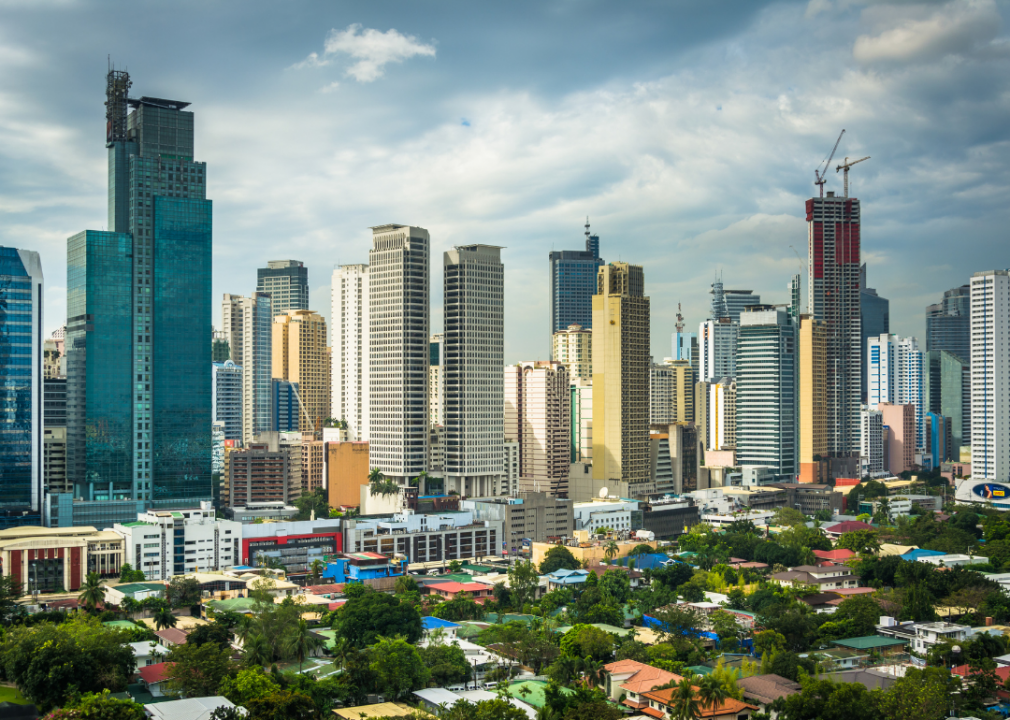
Jon Bilous // Shutterstock
#21. Philippines
– Yearly spending: $21.0 million
— #1. Combating Weapons of Mass Destruction ($13.1 million; 62.5%)
— #2. Counter-Terrorism ($4.2 million; 19.8%)
— #3. Peace and Security ($1.9 million; 9.0%)
– Indicators:
— Political stability (percentile): 16.67%
— Government effectiveness (-2.5 to 2.5): 0.05
— Control of corruption (-2.5 to 2.5): -0.57
In 1947, the U.S. and the Philippines signed a military bases agreement in which the United States was given a 99-year lease on several military bases. That agreement was dissolved in the 1960s; by 1992, U.S. troops had withdrawn from the nation. The countries maintain a strong relationship, with the U.S. providing millions in military aid each year and an active agreement that allows American forces to train with Filipino troops. President Rodrigo Duterte has since demanded an increase in U.S. military assistance, pushing up against a U.S. bill that would block funding to the country due to civil rights abuses.
You may also like: Countries that have mandatory voting
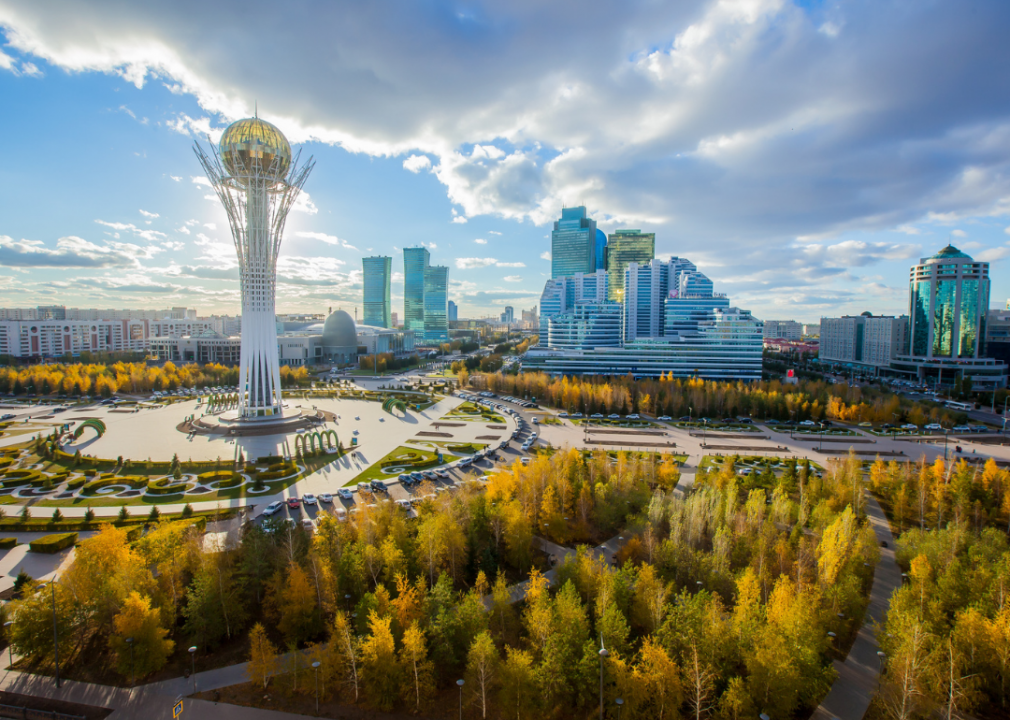
Jane Peimer // Shutterstock
#20. Kazakhstan
– Yearly spending: $21.3 million
— #1. Combating Weapons of Mass Destruction ($18.6 million; 87.0%)
— #2. Counter-Narcotics ($1.9 million; 8.7%)
— #3. Transnational Crime ($330,218; 1.5%)
– Indicators:
— Political stability (percentile): 45.71%
— Government effectiveness (-2.5 to 2.5): 0.12
— Control of corruption (-2.5 to 2.5): -0.32
The United States was the first country to recognize Kazakhstan as an independent nation following the dissolution of the Soviet Union in 1991. The two countries have since developed a strong bilateral relationship, with the U.S. giving Kazakhstan more than $275 million under its Cooperative Threat Reduction program, which is geared toward eliminating weapons of mass destruction and providing funds for military exercises and security.
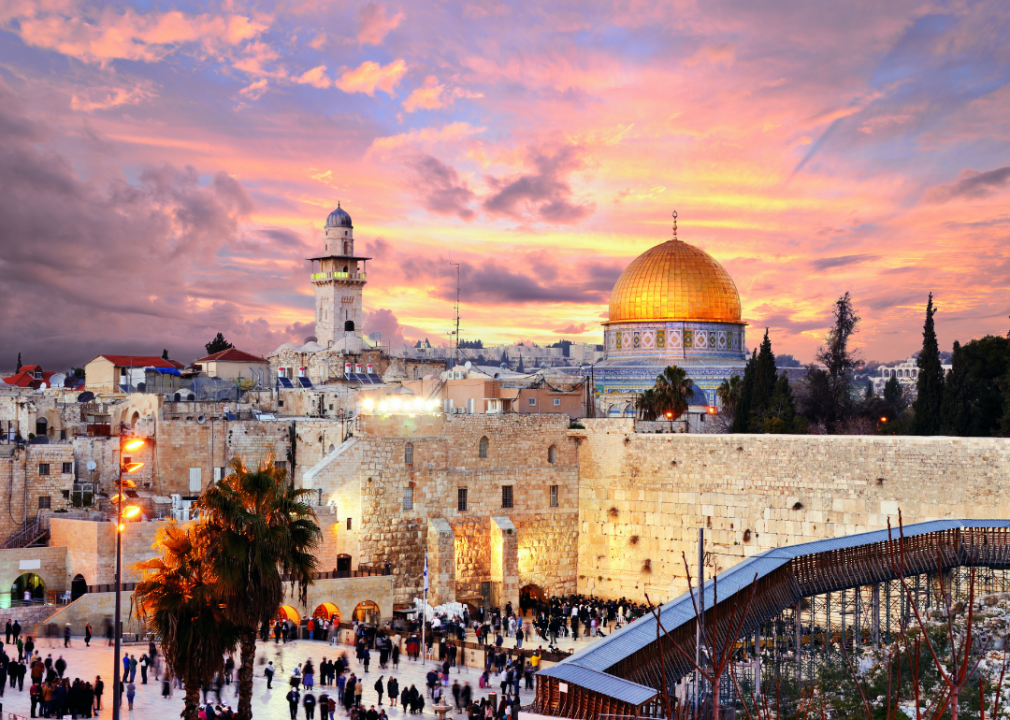
Sean Pavone // Shutterstock
#19. Israel
– Yearly spending: $21.4 million
— #1. Stabilization Operations and Security Sector Reform ($15.5 million; 72.7%)
— #2. Peace and Security ($5.8 million; 27.2%)
— #3. Counter-Narcotics ($27,023; 0.1%)
– Indicators:
— Political stability (percentile): 19.05%
— Government effectiveness (-2.5 to 2.5): 1.33
— Control of corruption (-2.5 to 2.5): 0.81
The U.S. and Israel have a bond dating back to the establishment of Israel in 1948. Israel’s security is considered an important facet of U.S. foreign policy and the two countries participate in joint counterterrorism efforts, military training, and weapons development. The United States also has strong economic ties to Israel, with annual bilateral trade activities reaching nearly $50 billion.
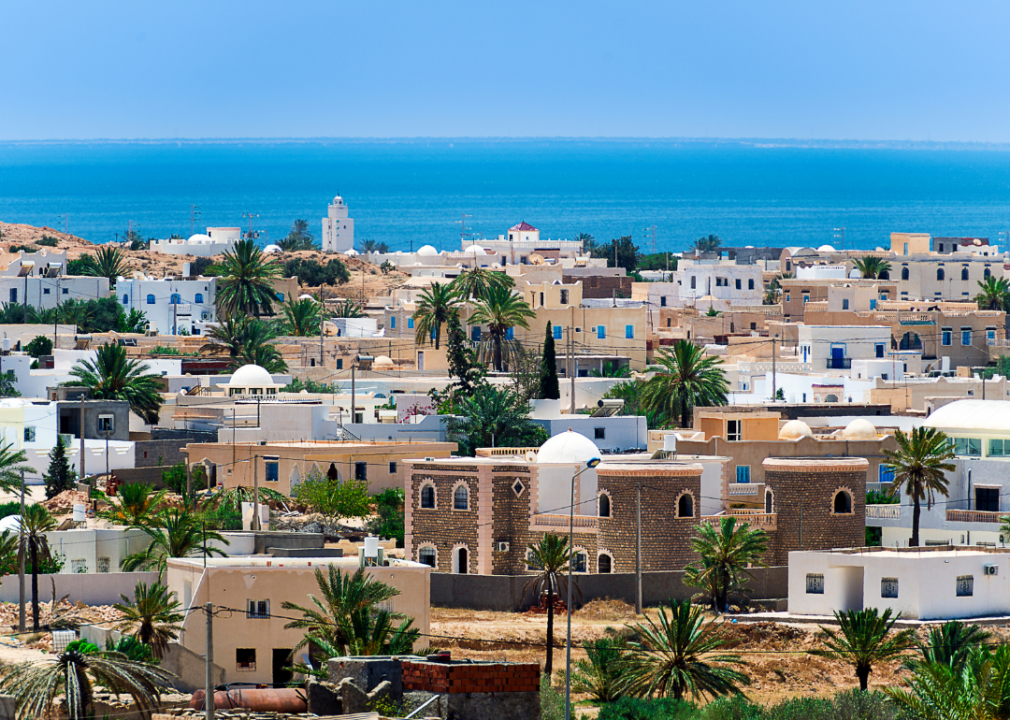
BTWImages // Shutterstock
#18. Tunisia
– Yearly spending: $23.0 million
— #1. Combating Weapons of Mass Destruction ($13.0 million; 56.5%)
— #2. Stabilization Operations and Security Sector Reform ($5.1 million; 22.3%)
— #3. Conflict Mitigation and Reconciliation ($3.0 million; 13.2%)
– Indicators:
— Political stability (percentile): 17.14%
— Government effectiveness (-2.5 to 2.5): -0.1
— Control of corruption (-2.5 to 2.5): -0.08
A 2011 revolution in Tunisia disrupted the government and led to a transition toward democracy—an ongoing process supported by the U.S. In addition to this military aid, the United States and Tunisia in 2019 signed a five-year development objective agreement that facilitates U.S. aid for employment and democratic consolidation.
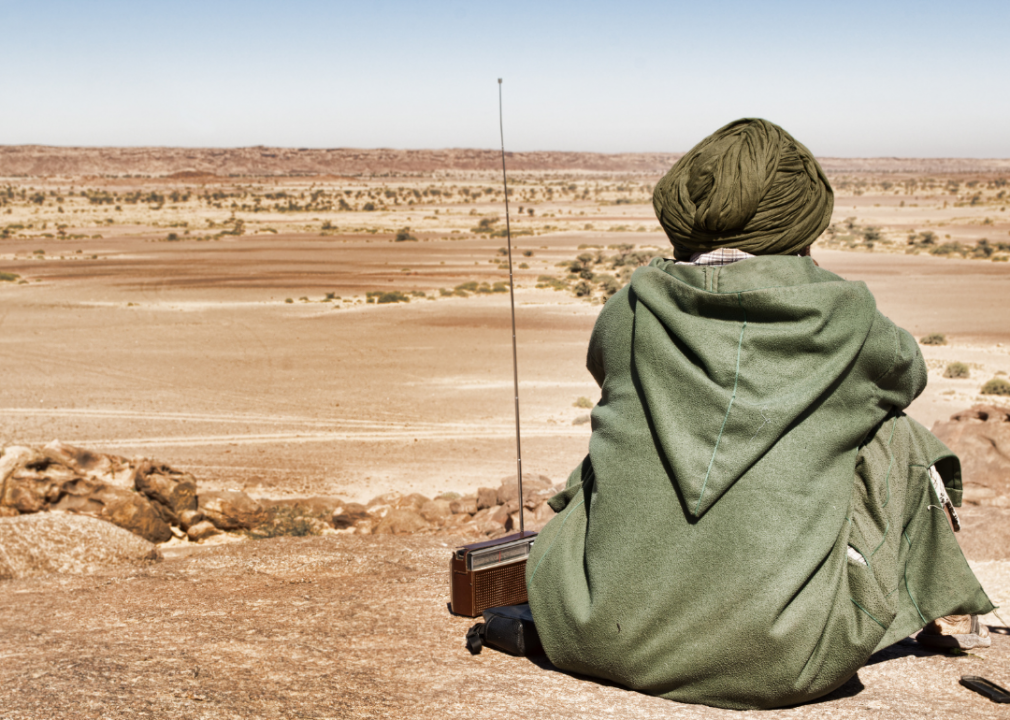
SAHARALAND // Shutterstock
#17. Western Sahara
– Yearly spending: $24.1 million
— #1. Peace and Security ($22.0 million; 91.4%)
— #2. Stabilization Operations and Security Sector Reform ($2.1 million; 8.6%)
Western Sahara is a territory located on the northwest coast of West Africa. While 20% of the region is controlled by the Sahrawi Arab Democratic Republic, the remaining 80% is controlled by Morocco, with whom the United States has a free-trade agreement. The U.S. also provides military aid to Morocco, including security, counterterrorism operations, counter-trafficking efforts, and the modernization of Morocco’s military. The trade agreement between the two countries has resulted in more than $1.5 billion in Moroccan imports to the U.S. and over $3 billion in exports from the U.S. to Morocco.
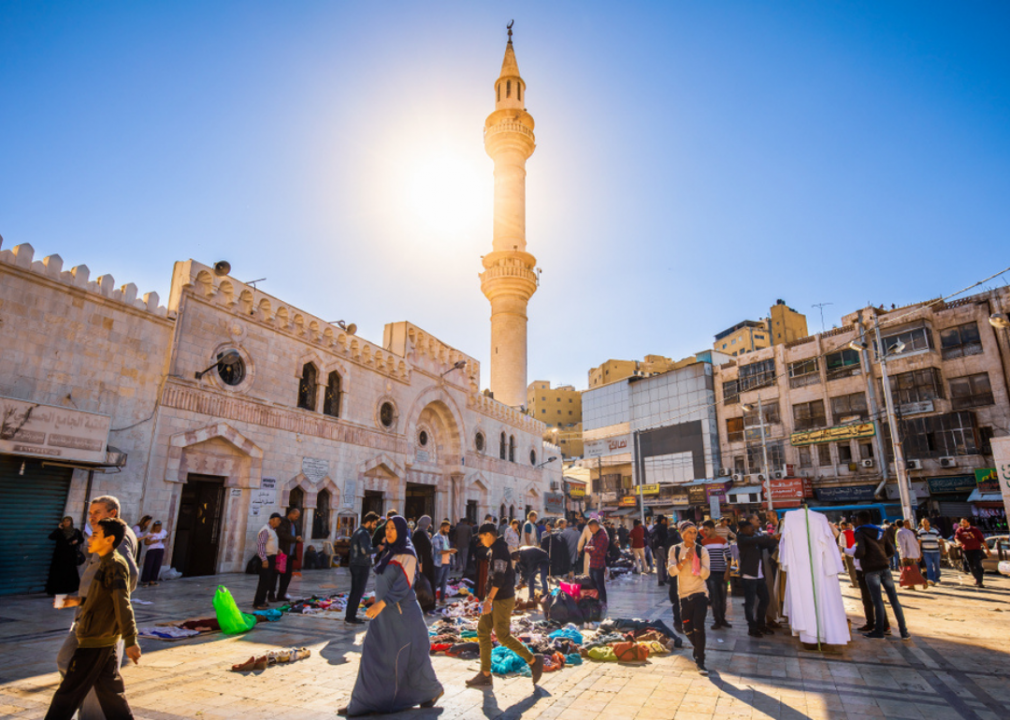
Maurizio De Mattei // Shutterstock
#16. Jordan
– Yearly spending: $30.4 million
— #1. Combating Weapons of Mass Destruction ($17.2 million; 56.8%)
— #2. Stabilization Operations and Security Sector Reform ($9.0 million; 29.6%)
— #3. Counter-Terrorism ($3.1 million; 10.2%)
– Indicators:
— Political stability (percentile): 33.33%
— Government effectiveness (-2.5 to 2.5): 0.1
— Control of corruption (-2.5 to 2.5): 0.13
The United States counts Jordan as a main partner in the Middle East, working together in counterterrorism operations, military intelligence, and the empowerment of political moderators as well as providing the country millions in military aid. The U.S. and Jordan have also shared a free trade agreement for more than 20 years, as well as a bilateral investment treaty and a science and technology cooperation agreement.
You may also like: The original Woodstock, by the numbers
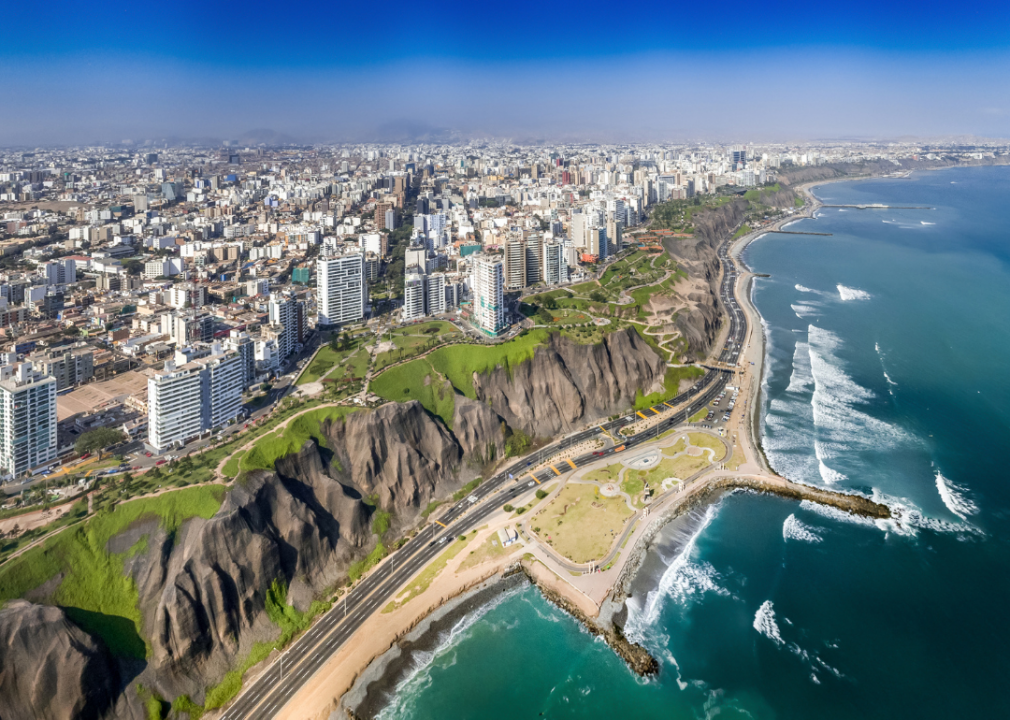
Christian Vinces // Shutterstock
#15. Peru
– Yearly spending: $31.7 million
— #1. Counter-Narcotics ($27.6 million; 87.0%)
— #2. Transnational Crime ($2.4 million; 7.4%)
— #3. Peace and Security ($1.0 million; 3.0%)
– Indicators:
— Political stability (percentile): 42.38%
— Government effectiveness (-2.5 to 2.5): -0.07
— Control of corruption (-2.5 to 2.5): -0.45
The United States established a relationship with Peru after the country declared independence from Spain in the 1800s. The U.S. continues to provide aid for security, law enforcement, and the fight against narcotics production. The two countries have had a trade agreement since 2009, which has helped drive growth and employment for both countries via a two-way trade in goods and agriculture exports. The U.S. also provides the citizens of Peru with educational assistance via a network of binational centers that offer English instruction, exchange programs, and academic advice for students wishing to study in the United States.
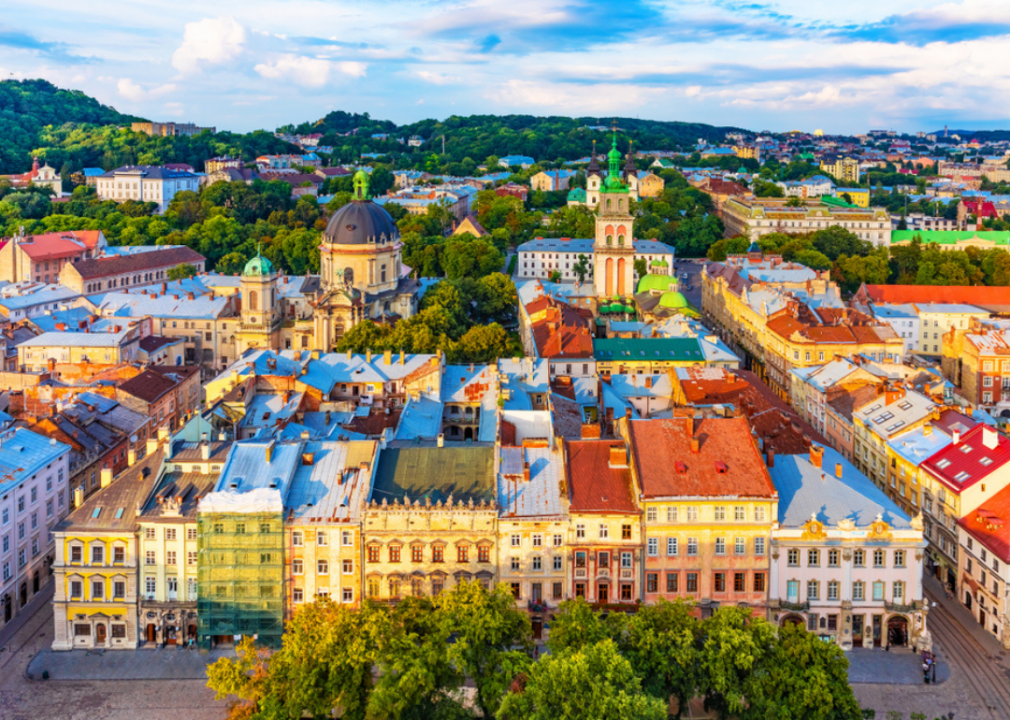
Oleksiy Mark // Shutterstock
#14. Ukraine
– Yearly spending: $43.7 million
— #1. Combating Weapons of Mass Destruction ($26.4 million; 60.3%)
— #2. Stabilization Operations and Security Sector Reform ($9.6 million; 21.9%)
— #3. Conflict Mitigation and Reconciliation ($4.1 million; 9.4%)
– Indicators:
— Political stability (percentile): 8.57%
— Government effectiveness (-2.5 to 2.5): -0.3
— Control of corruption (-2.5 to 2.5): -0.71
The United States has maintained a relationship with Ukraine since the country declared its independence from the Soviet Union in 1991. The relationship features trade, with the U.S. importing iron and steel products, chemicals, and agricultural goods, and exporting coal, machinery, and vehicles into Ukraine. In addition to the support Ukraine currently receives, the Biden administration in March 2021 introduced a $125 million military aid package to the country as part of the Ukraine Security Assistance Initiative.
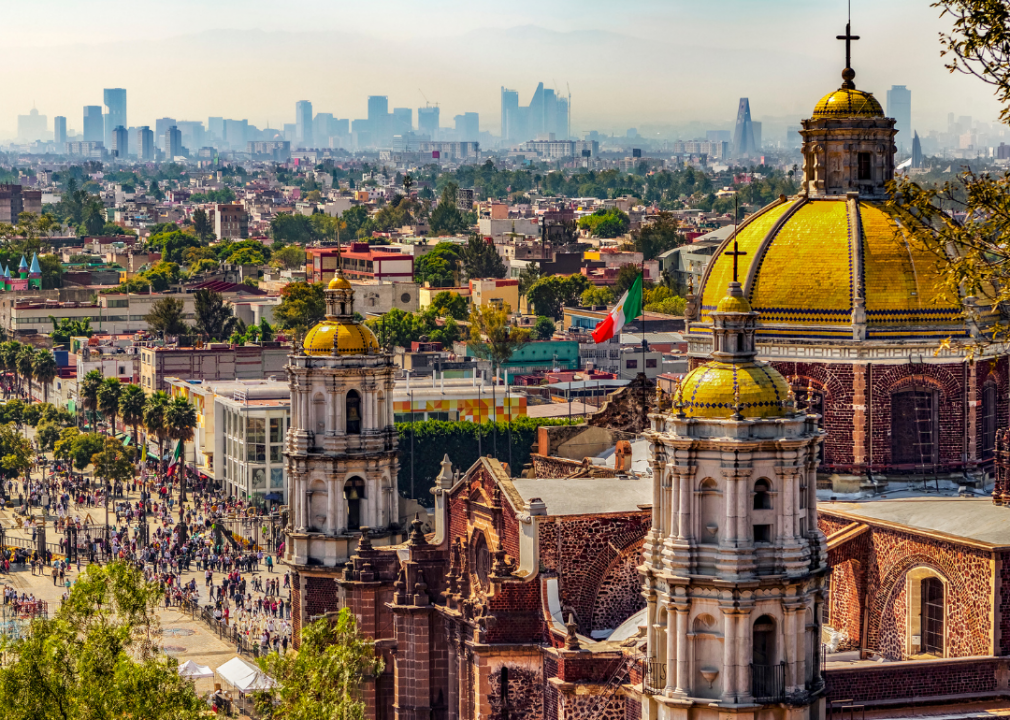
WitR // Shutterstock
#13. Mexico
– Yearly spending: $52.2 million
— #1. Counter-Narcotics ($29.2 million; 56.0%)
— #2. Peace and Security ($12.9 million; 24.6%)
— #3. Stabilization Operations and Security Sector Reform ($5.2 million; 9.9%)
– Indicators:
— Political stability (percentile): 20.95%
— Government effectiveness (-2.5 to 2.5): -0.16
— Control of corruption (-2.5 to 2.5): -0.82
Shared borders and strong binational trade practices make Mexico one of the United States’ most important relationships. Part of the aid provided by the U.S. to Mexico goes toward helping manage migration, while another goes toward improving Mexico’s criminal justice system and combating the transport of illicit drugs. The United States and Mexico also have a Bilateral Forum on Higher Education, which promotes student exchange, research partnerships, and academic opportunities for Mexican citizens.
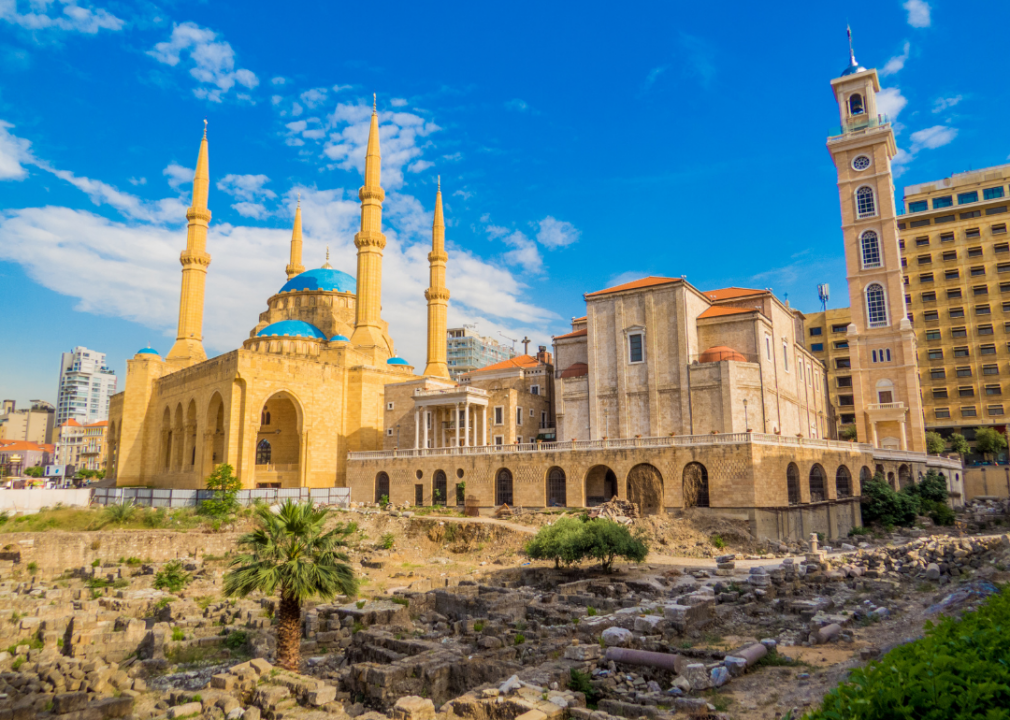
Diego Fiore // Shutterstock
#12. Lebanon
– Yearly spending: $54.8 million
— #1. Peace and Security ($26.1 million; 47.7%)
— #2. Combating Weapons of Mass Destruction ($14.5 million; 26.4%)
— #3. Conflict Mitigation and Reconciliation ($7.1 million; 13.0%)
– Indicators:
— Political stability (percentile): 7.62%
— Government effectiveness (-2.5 to 2.5): -0.83
— Control of corruption (-2.5 to 2.5): -1.16
Lebanon has struggled with political unrest throughout much of its history. The United States provides tens of millions in aid annually to help the country improve its governing practices, financial security, and the education of its citizens. The two countries recently signed a trade and investment framework agreement, promising to work together to expand trade relations between them—of benefit to the economy of both nations.
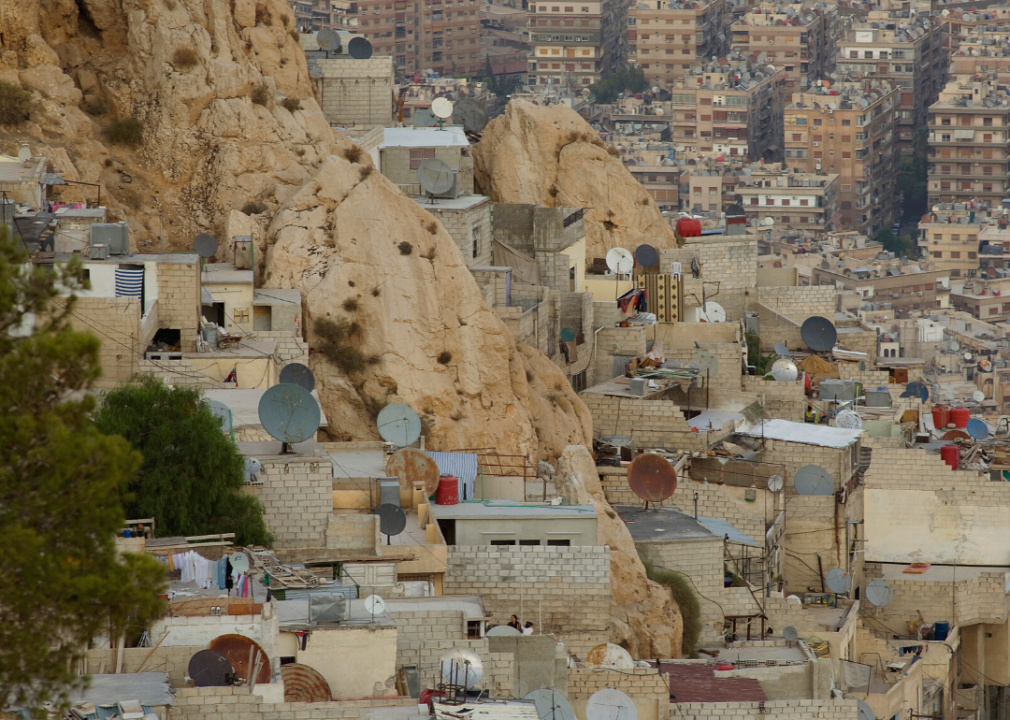
John Wreford // Shutterstock
#11. Syria
– Yearly spending: $59.4 million
— #1. Conflict Mitigation and Reconciliation ($41.7 million; 70.1%)
— #2. Peace and Security ($13.7 million; 23.0%)
— #3. Combating Weapons of Mass Destruction ($2.7 million; 4.6%)
– Indicators:
— Political stability (percentile): 0.48%
— Government effectiveness (-2.5 to 2.5): -1.71
— Control of corruption (-2.5 to 2.5): -1.69
The United States initially established relations with Syria in the 1940s. Syria ended those relations in 1967, then reestablished them in 1974. Syria has been subject to sanctions from the U.S. due to its continued involvement and support of terrorism and its efforts to weaken U.S. stabilization work in Iraq and Syria. The military aid provided by the United States has gone to help build up the Syrian resistance, and the U.S. is also the largest donor of humanitarian aid to the country, providing more than $12 million in assistance.
You may also like: Major newspaper headlines from the year you were born

sandis sveicers // Shutterstock
#10. Central African Republic
– Yearly spending: $81.0 million
— #1. Peace and Security ($78.5 million; 96.8%)
— #2. Conflict Mitigation and Reconciliation ($1.4 million; 1.8%)
— #3. Stabilization Operations and Security Sector Reform ($1.1 million; 1.4%)
– Indicators:
— Political stability (percentile): 3.81%
— Government effectiveness (-2.5 to 2.5): -1.75
— Control of corruption (-2.5 to 2.5): -1.23
As one of the world’s largest undeveloped regions, the Central African Republic has struggled with political unrest and upheaval since the country declared its independence from France in 1960. The U.S. has maintained diplomatic relations with the Central African Republic, providing both military and humanitarian aid and supporting bilateral trade agreements. These efforts are coordinated with other entities that provide aid to the country, such as the UN and the World Bank.
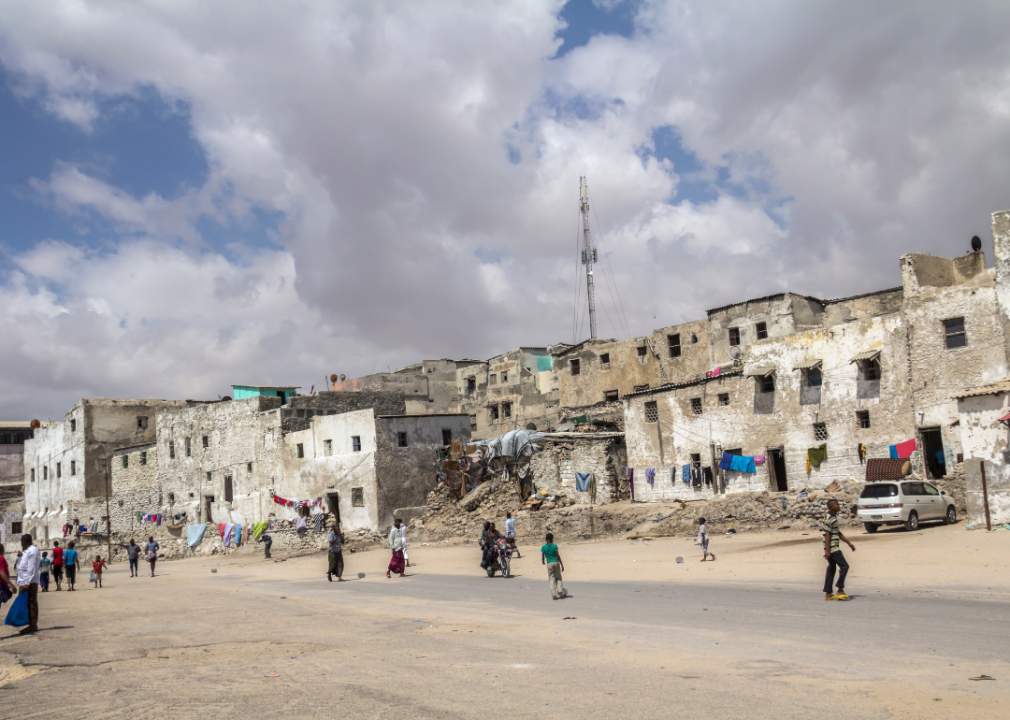
MDart10 // Shutterstock
#9. Somalia
– Yearly spending: $82.0 million
— #1. Stabilization Operations and Security Sector Reform ($52.1 million; 63.5%)
— #2. Conflict Mitigation and Reconciliation ($20.0 million; 24.4%)
— #3. Peace and Security ($7.0 million; 8.5%)
– Indicators:
— Political stability (percentile): 2.86%
— Government effectiveness (-2.5 to 2.5): -2.24
— Control of corruption (-2.5 to 2.5): -1.71
Diplomatic relations between the United States and Somalia encompass not just military aid but also humanitarian and development assistance. Despite ongoing struggles, the U.S. remains invested in the country’s stability, in part because of Somalia’s location. Somalia’s northern coast lies along the Gulf of Aden, where maritime traffic—transporting goods like oil—must be maintained. The U.S. continues to support peacekeeping efforts, helping establish the economy there and promoting stability.
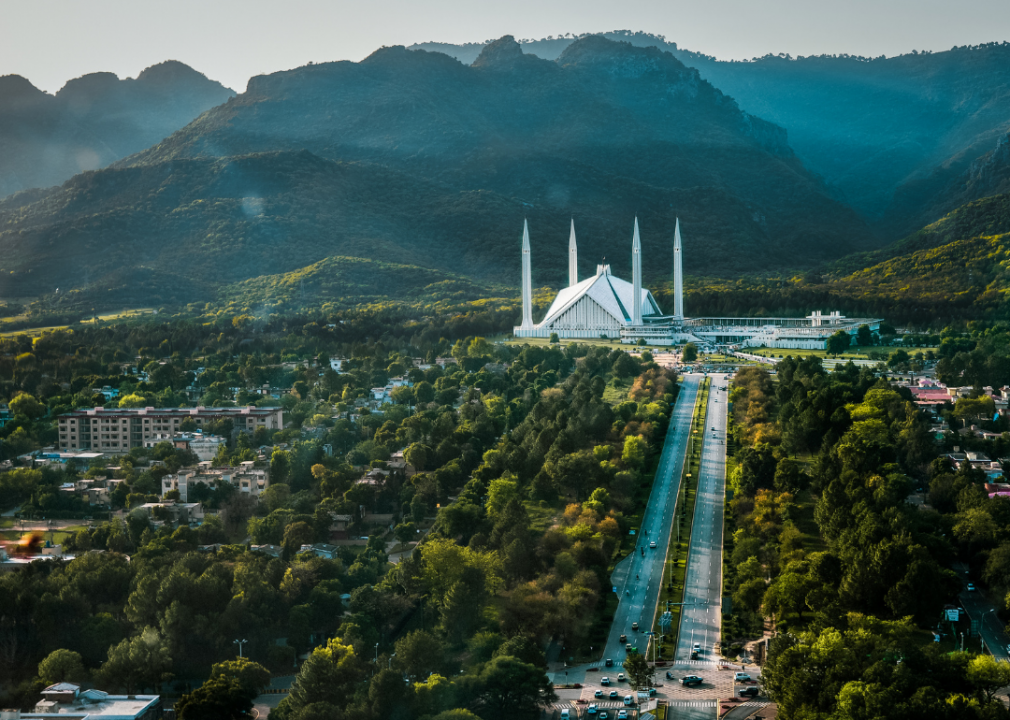
Umer Arif // Shutterstock
#8. Pakistan
– Yearly spending: $82.7 million
— #1. Stabilization Operations and Security Sector Reform ($38.8 million; 46.9%)
— #2. Conflict Mitigation and Reconciliation ($32.7 million; 39.5%)
— #3. Counter-Narcotics ($5.4 million; 6.6%)
– Indicators:
— Political stability (percentile): 3.33%
— Government effectiveness (-2.5 to 2.5): -0.68
— Control of corruption (-2.5 to 2.5): -0.85
Counterterrorism, trade, and investment are all part of both the military and humanitarian aid the United States provides to Pakistan. The country has the 42nd largest economy in the world, and the U.S. has made large investments in consumer goods, energy, and agriculture in an effort to strengthen commercial ties.
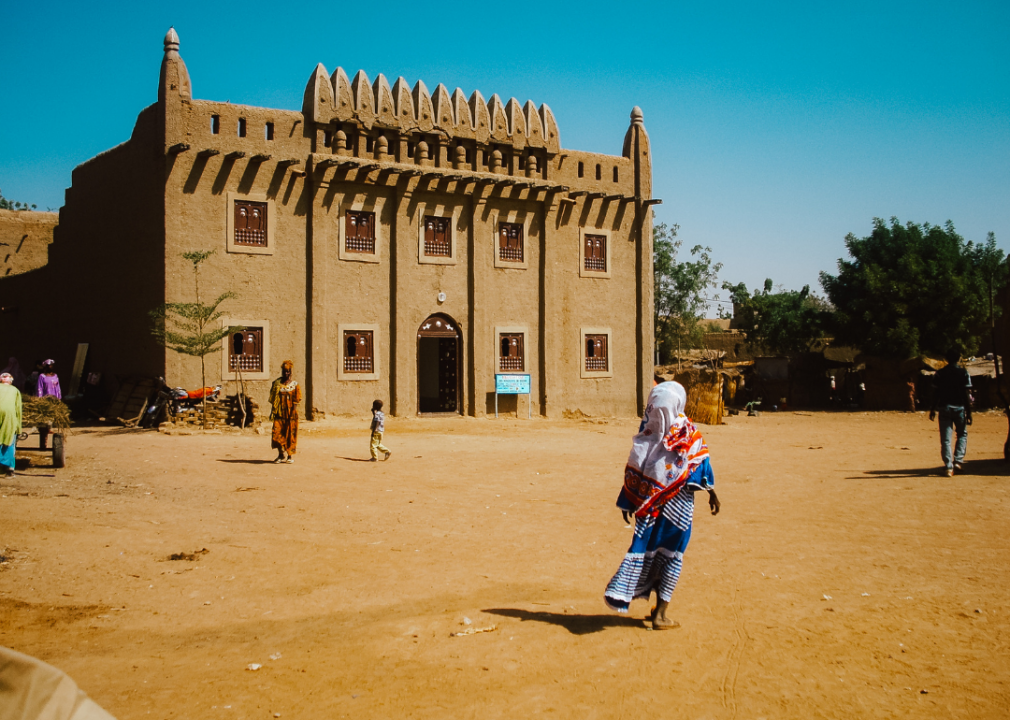
Tremens Productions // Shutterstock
#7. Mali
– Yearly spending: $132.4 million
— #1. Peace and Security ($125.6 million; 94.8%)
— #2. Conflict Mitigation and Reconciliation ($4.3 million; 3.3%)
— #3. Counter-Terrorism ($1.4 million; 1.1%)
– Indicators:
— Political stability (percentile): 4.29%
— Government effectiveness (-2.5 to 2.5): -1.06
— Control of corruption (-2.5 to 2.5): -0.7
The United States has had strong diplomatic ties to Mali since the country gained independence from France in 1960. Ongoing political unrest in recent years, including a military coup in 2020, has led the U.S. to renew its commitments to helping Mali restore peace and improve its economy. Part of the U.S.’s efforts included signing a formal agreement with Mali’s government in 2015 to implement its five-year Country Development Cooperation Strategy.
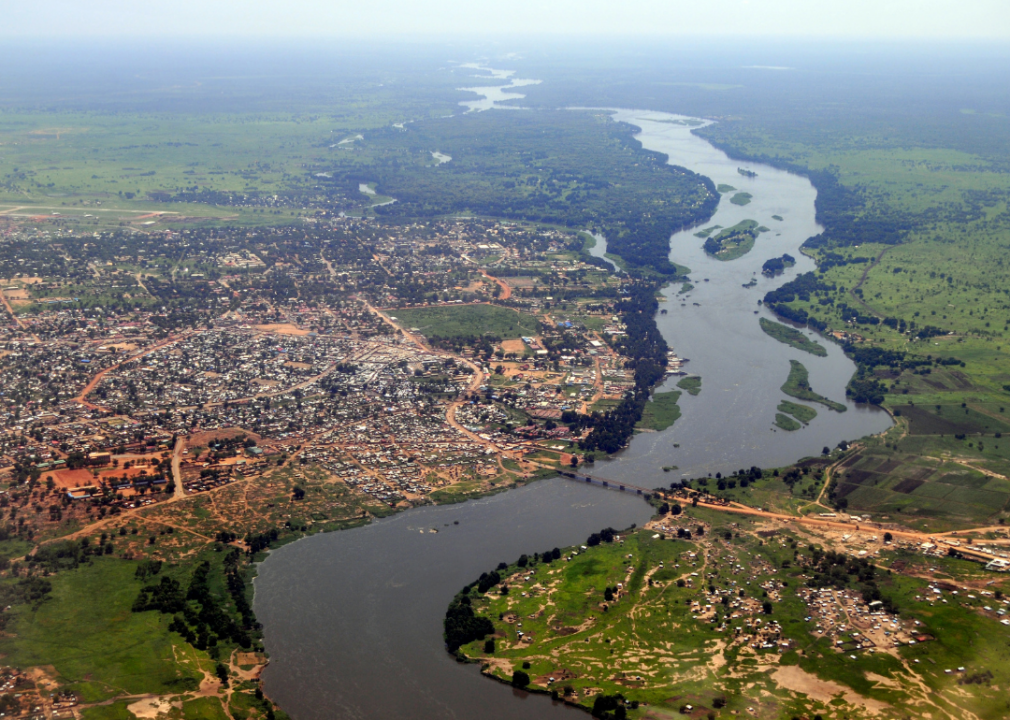
Frontpage // Shutterstock
#6. South Sudan
– Yearly spending: $146.2 million
— #1. Peace and Security ($128.0 million; 87.5%)
— #2. Conflict Mitigation and Reconciliation ($11.9 million; 8.1%)
— #3. Stabilization Operations and Security Sector Reform ($6.1 million; 4.2%)
– Indicators:
— Political stability (percentile): 2.38%
— Government effectiveness (-2.5 to 2.5): -2.45
— Control of corruption (-2.5 to 2.5): -1.77
South Sudan became an independent state in 2011, following its secession from Sudan. Since then, the country has experienced ongoing unrest, including uprisings in 2013 that led to extreme violence and an immediate humanitarian crisis. The United States, which played a large role in the 2005 peace agreement that led to the country’s independence, has maintained ties with South Sudan, providing military and humanitarian assistance in an effort to restore national stability.
You may also like: Cities before conflict: What it was like to visit Juarez, Tehran, and 13 other afflicted places
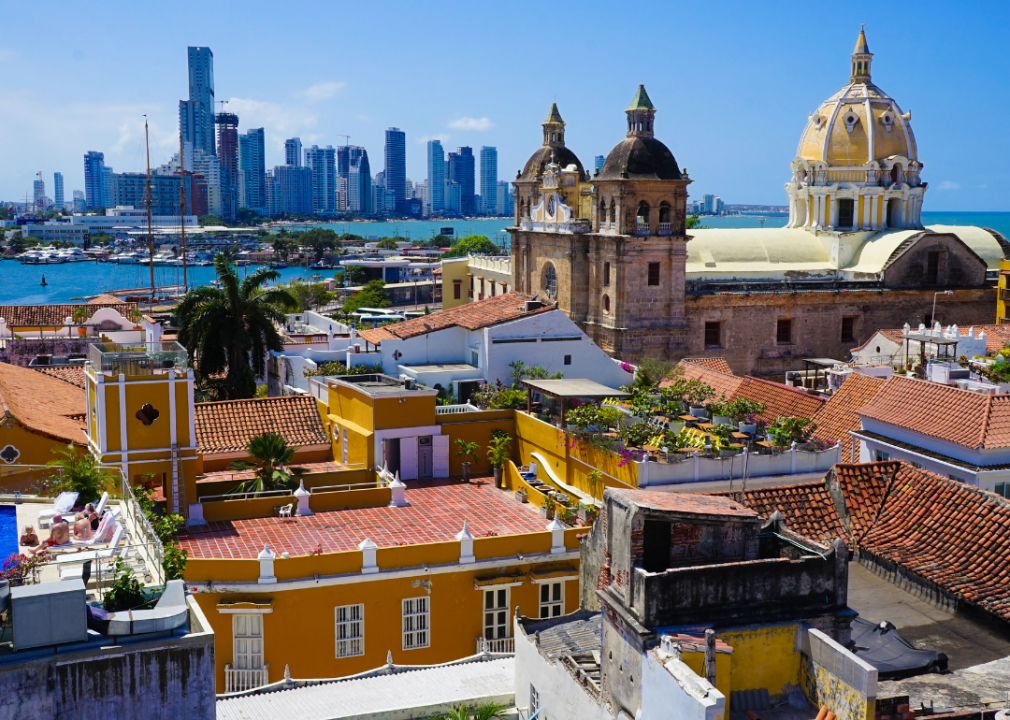
Inspired By Maps // Shutterstock
#5. Colombia
– Yearly spending: $149.7 million
— #1. Counter-Narcotics ($111.2 million; 74.3%)
— #2. Stabilization Operations and Security Sector Reform ($15.9 million; 10.6%)
— #3. Conflict Mitigation and Reconciliation ($11.3 million; 7.6%)
– Indicators:
— Political stability (percentile): 15.71%
— Government effectiveness (-2.5 to 2.5): 0.07
— Control of corruption (-2.5 to 2.5): -0.23
While Colombia has historically struggled with conflict and political upheaval, the last 20 years have brought about big changes—in part because of the U.S.’s commitment to helping the country find peace and stability. The U.S. and Colombia partnered in efforts to help Venezuela return to democracy as well as working together to eradicate the illegal drug trade, improve Colombia’s economy, and develop their mutual trade agreement.
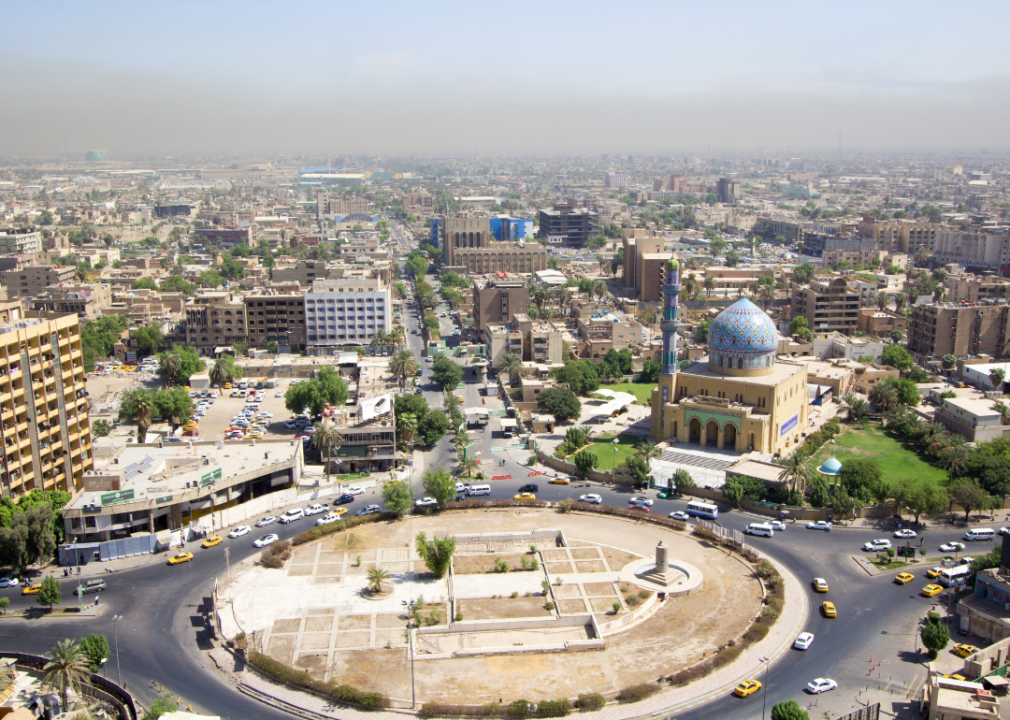
rasoulali // Shutterstock
#4. Iraq
– Yearly spending: $164.2 million
— #1. Stabilization Operations and Security Sector Reform ($94.3 million; 57.4%)
— #2. Conflict Mitigation and Reconciliation ($45.1 million; 27.5%)
— #3. Combating Weapons of Mass Destruction ($16.2 million; 9.9%)
– Indicators:
— Political stability (percentile): 1.90%
— Government effectiveness (-2.5 to 2.5): -1.34
— Control of corruption (-2.5 to 2.5): -1.34
Relations between the United States and Iraq began as early as the 1930s when the U.S. recognized Iraq by signing the Anglo-American-Iraqi Convention. The countries have remained diplomatic partners, with the United States assisting in Iraq’s 2017 liberation of ISIS as well as providing security and humanitarian assistance. The U.S. and Iraq also have strong economic ties via trade, with two-way trade goods exceeding $8 billion in 2019.

Katja Tsvetkova // Shutterstock
#3. Congo
– Yearly spending: $179.9 million
— #1. Peace and Security ($172.0 million; 95.6%)
— #2. Conflict Mitigation and Reconciliation ($6.6 million; 3.7%)
— #3. Stabilization Operations and Security Sector Reform ($1.0 million; 0.6%)
– Indicators:
— Political stability (percentile): 5.71%
— Government effectiveness (-2.5 to 2.5): -1.63
— Control of corruption (-2.5 to 2.5): -1.54
The United States and the Democratic Republic of the Congo (DRC) have a long-standing relationship, with the U.S. providing the African country with military and humanitarian aid. Trade between the two countries is insignificant, with the exception of copper imports: copper is the top import from the DRC and accounts for more than 50% of its exports to the U.S. Exports from the DRC also include antiques, diamonds, and coffee beans.
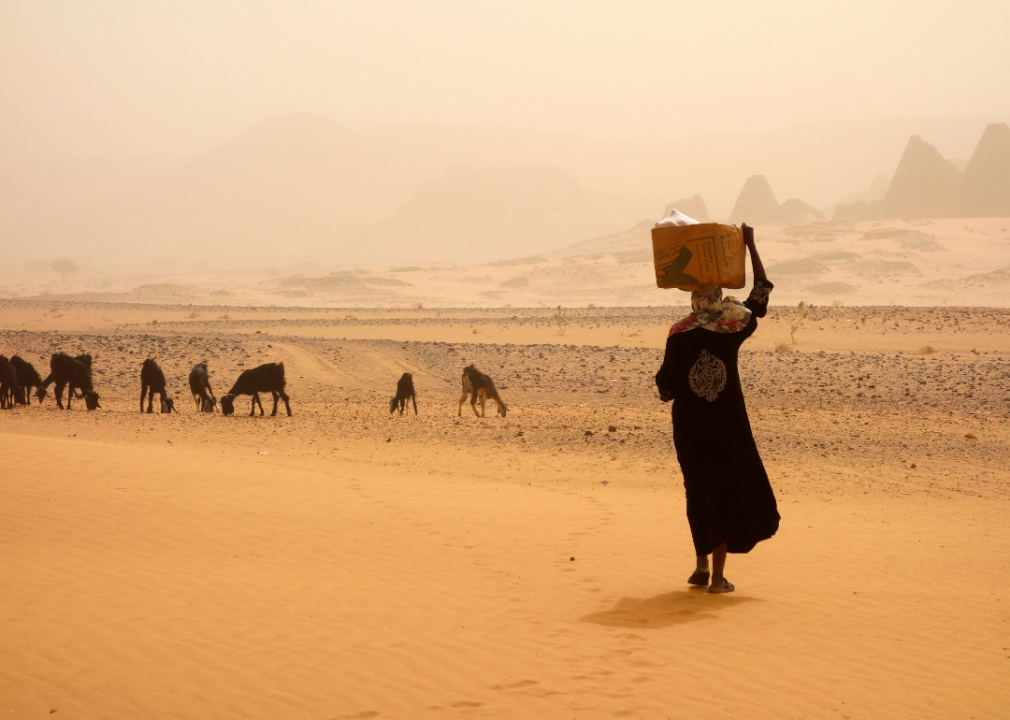
yiannisscheidt // Shutterstock
#2. Sudan
– Yearly spending: $228.8 million
— #1. Peace and Security ($224.6 million; 98.2%)
— #2. Conflict Mitigation and Reconciliation ($4.2 million; 1.8%)
— #3. Stabilization Operations and Security Sector Reform ($14,204; 0.0%)
– Indicators:
— Political stability (percentile): 6.67%
— Government effectiveness (-2.5 to 2.5): -1.62
— Control of corruption (-2.5 to 2.5): -1.37
Since declaring independence from Egypt and the United Kingdom in the 1950s, Sudan has experienced ongoing political conflicts and unrest. For years, the U.S. has provided assistance in the form of military and humanitarian aid, supporting economic stabilization, peace, and education for the people of Sudan. Furthermore, the U.S. removed economic sanctions against Sudan in 2017, providing opportunities for trade and business.
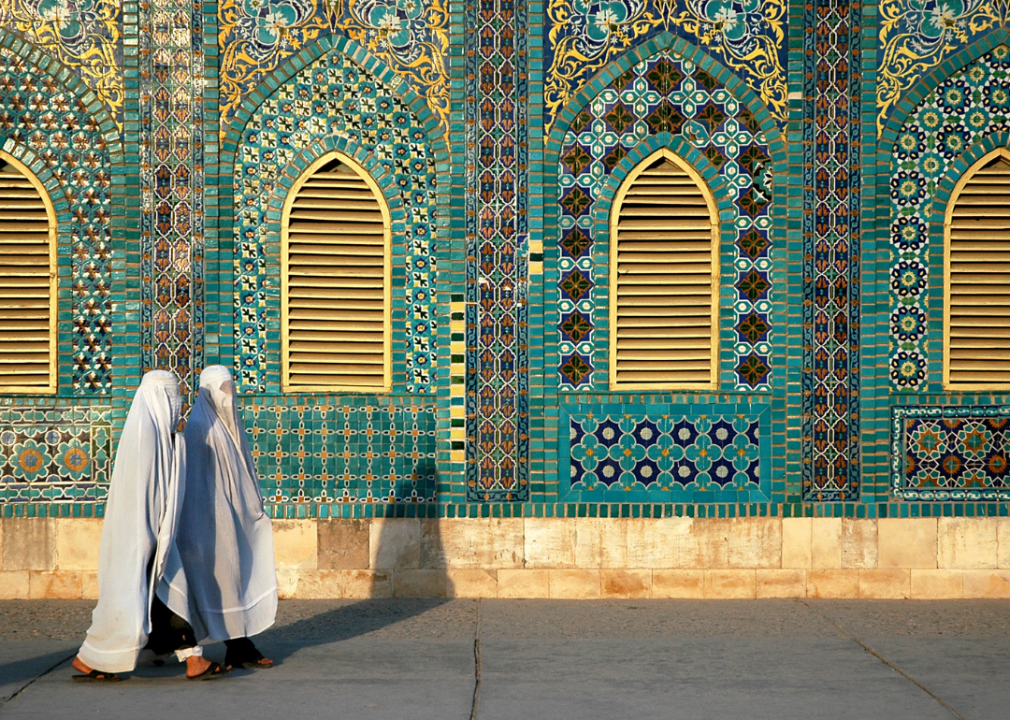
Jono Photography // Shutterstock
#1. Afghanistan
– Yearly spending: $1.9 billion
— #1. Peace and Security ($1.2 billion; 63.4%)
— #2. Stabilization Operations and Security Sector Reform ($538.0 million; 28.4%)
— #3. Counter-Narcotics ($73.3 million; 3.9%)
– Indicators:
— Political stability (percentile): 0.95%
— Government effectiveness (-2.5 to 2.5): -1.46
— Control of corruption (-2.5 to 2.5): -1.4
The United States has occupied Afghanistan since the 9/11 attacks of September 2001. The U.S. ended its combat role in 2015, and as of 2021, U.S. military is working in tandem with Afghan troops to fight terrorism and disrupt ISIS-K and Al-Qaida activity. The U.S., along with a coalition of more than 100 other organizations and countries, provides both military and humanitarian aid to Afghanistan, and the two countries have signed a trade and investment agreement geared toward bilateral trade.
You may also like: Most dangerous countries for journalists